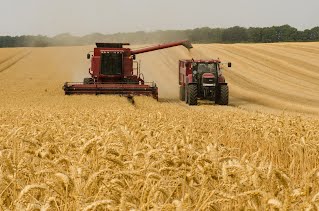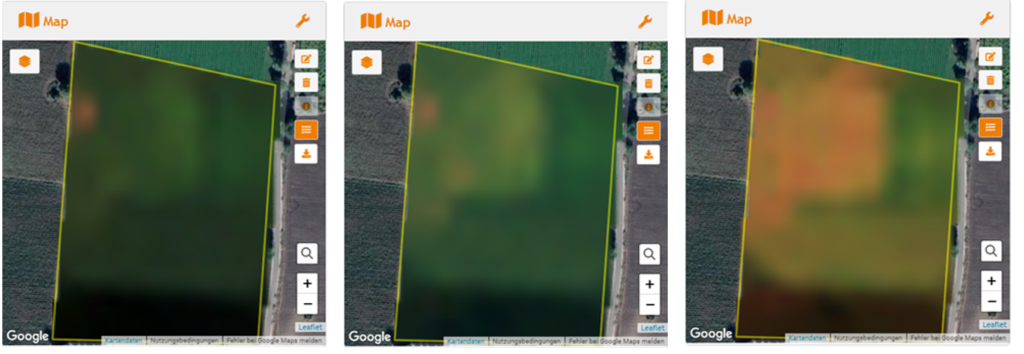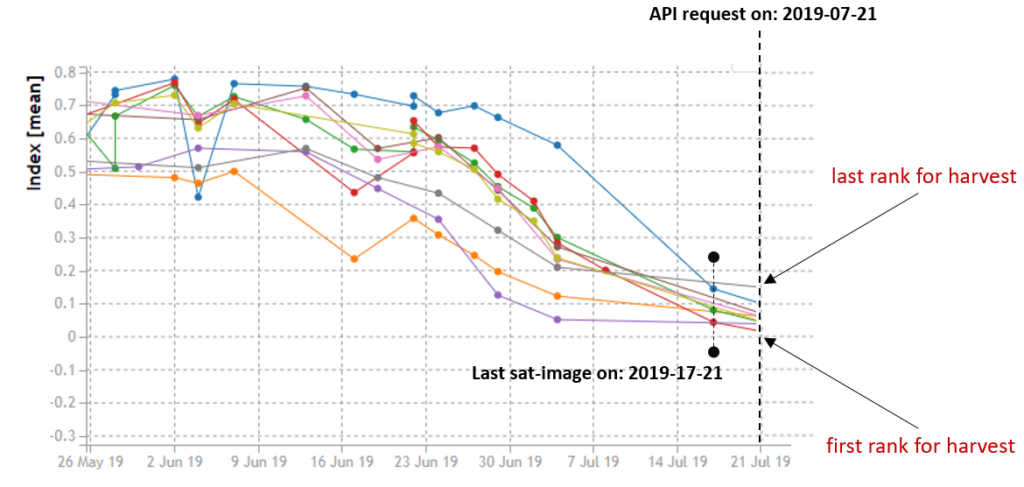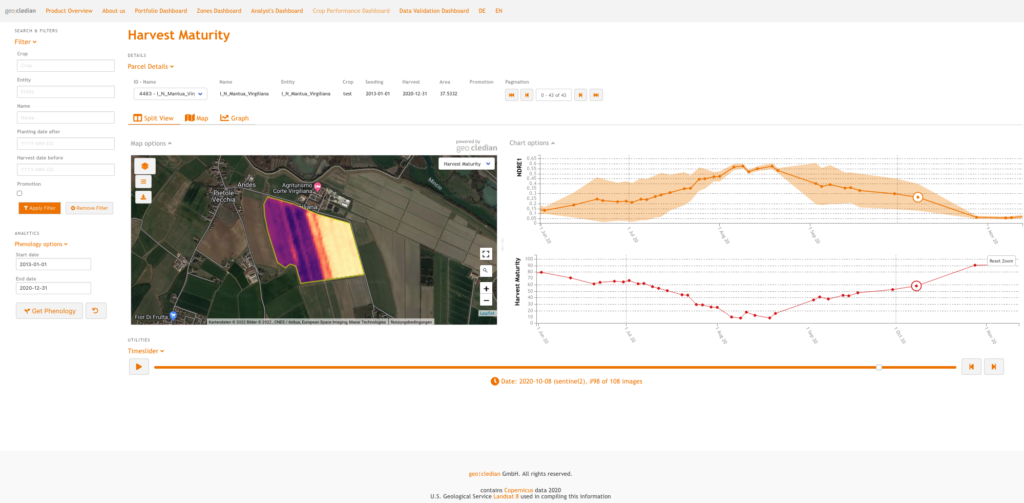Which parcels should be harvested first and when?

Accurate prediction of optimal harvest dates is important to maximize crop yields and quality as maturity approaches. Yield loss can occur if harvest is done too early or too late – both scenarios are undesirable. If the crops are harvested prematurely, high residual moisture makes it prone to mildew and other pests during storage. The harvest quality then deterioates, leading to a serious decrease in yield. If cereals are harvested too late, the quality declines severely (Xu et al. 2019, Zude et al. 2002, Mutanga et al. 2013, Meng et al. 2013).
Optimising the harvest date is vital for most farm managers and farmers. It allows to set up a harvest schedule for each crop type, thus, also mitigating difficulties in manpower and machinery availability, logistics and storage as well as providing important statistics about the location and origin of the crop (where will the crops be harvested first?).
To provide a practical solution to all these implications, we developed a harvest maturity and scheduling service for grains. It uses spectral indices sensitive to crop senescence to rank all parcels on a desired date (during the ripening stage, at the end of the season) according to their harvest readiness and even allows a forecast. The benefits of such service are obvious:
- Understanding crop maturity status
- Determine harvest order of fields
- Optimising harvest scheduling and logistics
- Optimising yield
- Prediction of quality (with crop specific calibration data)
- Reducing costs for laboratory measurements
- Improve yield prediction

Product: Harvest Ranking
Our harvest ranking is based on our maturity index. By applying a ranking function the ideal harvest order of fields will be determined according to their maturity index at a given date. This product works without prediction and gives you the possibility to analyse the current maturity index status of several fields.

Product: Harvest maturity index
Our harvest maturity index is the basis for the maturity determination of grains and allows the comparison of fields in the frame of harvest ranking as described above. The maturity index is based on Red-Edge bands as it is scientifically proven that they correlate very well with the ripening and maturity stages of crops. During maturation the index shows a characteristic slope. It is assumed that the increase of chlorophyll breakdown occurring in the third period is triggered when the climacteric rise of the fruit respiration rate appears. Therefore, spectral analysis in the red edge range can be used as a fast and non-destructive tool for estimating the optimum harvest dates (Zude et al. 2002). For this index we deliver time series of raster images and statistics, just like for any other index. Therefore it is also possible to monitor the within field variability of maturation in a field.
Our Harvest Maturity Dashboard allows to monitor the growth and maturation of grain fields:

Crop specific prediction models
To predict the optimum harvest date of a crop in advance predictive modelling is needed. This is based on crop specific models that estimate e.g. the dry matter content of a specific crop variety. We develop these models on request. We have successfully completed projects on yield and harvest date prediction for tomatos, peaches, grapevine and Maize.
References:
- Jin Xu, Jihua Meng, Lindi J. Quackenbush, Use of remote sensing to predict the optimal harvest date of corn, Field Crops Research, Volume 236, 2019, Pages 1-13, ISSN 0378-4290, https://doi.org/10.1016/j.fcr.2019.03.003.
- Manuela Zude and B. Herold, Optimum Harvest Date Determination for Apples Using Spectral Analysis, Gartenbauwissenschaft, 67 (5). S. 199–204, 2002, ISSN 0016–478X
- S. Mutanga, C. Schoor, P. Olorunju, T. Gonah and A. Ramoelo, „Determining the Best Optimum Time for Predicting Sugarcane Yield Using Hyper-Temporal Satellite Imagery,“ Advances in Remote Sensing, Vol. 2 No. 3, 2013, pp. 269-275. doi: 10.4236/ars.2013.23029.
- Meng J.H., Dong T., Zhang M., You X., Wu B. (2013) Predicting optimal soybean harvesting dates with satellite data. In: Stafford J.V. (eds) Precision agriculture ’13. Wageningen Academic Publishers, Wageningen
